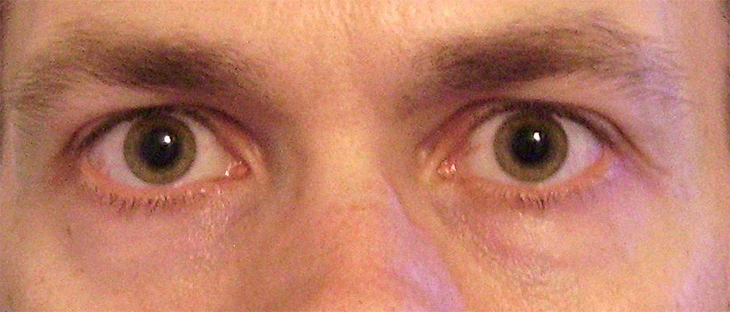

This examination, however, does not examine the integrity of gray matter and subcortical white matter tracts that can be disrupted as a result of primary or secondary injury following any head injury. This is an examination that assesses whether there is a neurological lesion in the visual pathways served by the cranial nerves. The eye examination that is performed in the emergency room or at a physician’s office following a head injury is part of a basic neurological exam that includes examination of the cranial nerves.

A normal eye examination in the emergency room following a head injury cannot rule out a traumatic brain injury. That examination is generally limited to an assessment of extraocular movements and the pupils (equal and reactive to light). Traumatic bilateral fourth nerve palsy: Double vision induced by downward gaze after head injury.After your child suffers a concussion, don’t be misled by the part of the emergency room examination that includes the eyes. The measurement of eye movements in mild traumatic brain injury: A structured review of an emerging area. Neuro-ophthalmic manifestations of post-concussion syndrome.Responsiveness of the post-concussion symptom scale to monitor. Photophobia: Shared pathophysiology underlying dry eye disease, migraine and traumatic brain injury leading to central neuroplasticity of the trigeminothalamic pathway. Colored glasses to mitigate photophobia symptoms posttraumatic brain injury. You can learn more about how we ensure our content is accurate and current by reading our editorial policy. We link primary sources - including studies, scientific references, and statistics - within each article and also list them in the resources section at the bottom of our articles. Medical News Today has strict sourcing guidelines and draws only from peer-reviewed studies, academic research institutions, and medical journals and associations. They should also seek emergency help if new symptoms suddenly appear or become severe. If symptoms persist beyond this time, people can seek medical help. It is important to take frequent breaks until these symptoms go away.Īdults often recover from concussion after 10–14 days, while children generally need 4 weeks. They should also limit screen use and prolonged periods of close work, such as reading. If a person experiences visual symptoms, they may find wearing sunglasses helpful to reduce light sensitivity. If symptoms occur, they need to continue resting. Some gentle aerobic exercise, such as walking, may help with recovery. avoiding using digital screens for the first 48 hours, as this may slow recoveryĪfter 24–48 hours, a person can try gradually increasing their physical activity as long as it does not cause symptoms.avoiding overstimulating environments, such as noisy places or loud music.A person may also experience nausea and dizziness due to disorientation.Īlthough there is no specific treatment for concussion, there are some things people can do to help their recovery, including: This can include difficulty tracking or following objects with the eyes, loss of range of motion in the eyes, and sudden jerking movements known as ocular flutter or opsoclonus. Altered eye movementsĪltered eye movements are a common symptom of concussion. Experts believe it is neurological in origin and involves the trigeminal nerve pathway, which has a role in sensory input and pain sensation. Light sensitivity can cause significant discomfort and trigger a range of other symptoms, including nausea and headaches. Photophobia is very common following a head injury, which is why hospitals keep lights dimmed in rooms where people with concussions are staying. Often, it is due to fourth nerve palsy, meaning paralysis of the fourth cranial nerve that can lead to a misalignment of the eye muscles. It may result from trauma to the delicate orbital bones, the extraocular muscles that direct eye gaze, or injury to the optic nerve. Double visionĭouble vision, or diplopia, is when a person sees two images of an object instead of one.

This can cause a range of issues that can vary in how long they persist. When the brain becomes injured, the force of the impact can affect the eyes. Additionally, the eyes are particularly vulnerable to the effects of concussions because of their proximity to the brain. Vision-related activities occupy more brain territory than any other body function.


 0 kommentar(er)
0 kommentar(er)
